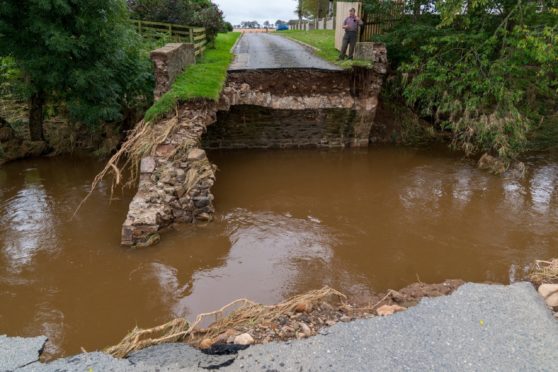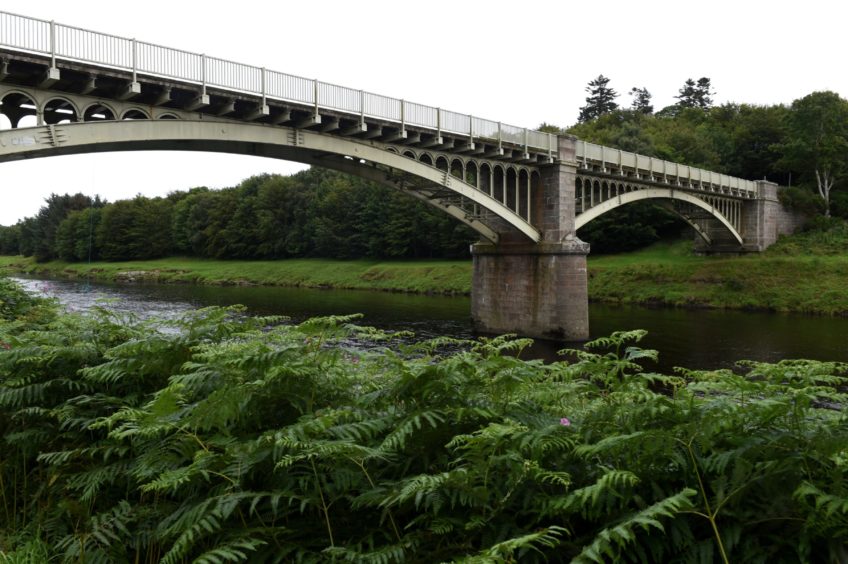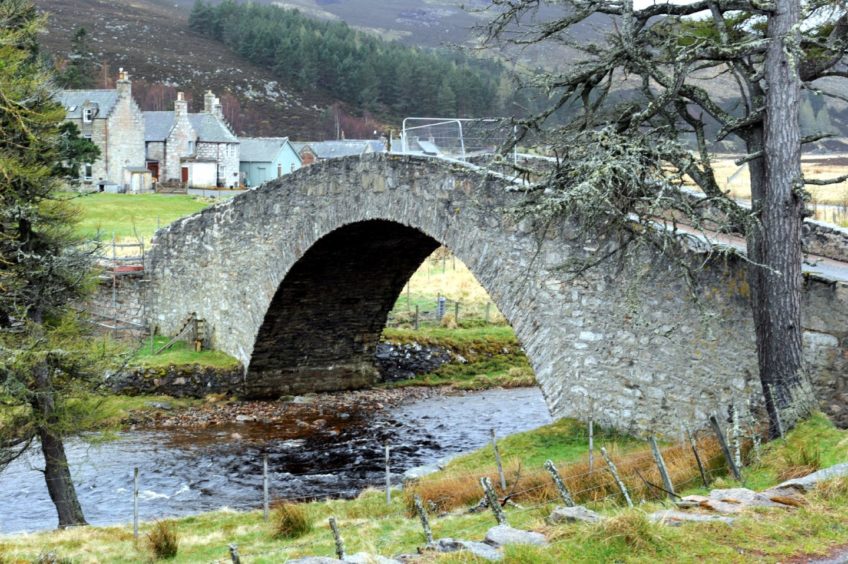Crumbling bridges across Aberdeenshire will now be prioritised for repairs under what council chiefs call a “robust, objective policy” which is hoped will ensure public cash is being spent where it is most needed.
Aberdeenshire contains a total of 1,308 bridges on 3,500 miles of public road, and many of them are very old, and not suited for modern traffic.
The local authority estimates more than 900 of them are more than 100 years old, and around 520 of them are more than 200 years old.
As a result, the authority’s infrastructure services frequently have to deal with bridge closures due to inspections finding they are unsafe because of wear and tear and their age.
In many cases such closures cause havoc in local communities.
Examples include the ongoing closure of Park Bridge between Drumoak and Durris, the frequent closure of Gairnshiel Bridge which links Deeside to Moray and Strathdon, and six bridges in the King Edward area that were left out of action after severe flooding in September 2019.
Major weather events including Storm Frank in December 2015 have also caused severe problems through scouring of bridges, changes in watercourses and even total collapses.
During Storm Frank, more than 300 bridges were damaged.
But with financial woes impacting the council’s coffers, finding the funding to repair bridges or find other solutions to issues has proven difficult.
In order to try and make sure council money is being spent most efficiently for bridge repairs, today’s infrastructure services committee agreed a new policy and procedure to determine what projects should be prioritised.
The new rules
Under the new rules, each bridge will be assessed and prioritised for whatever work is deemed the best way forward depending on a number of factors.
These factors include but are not limited to how critical they are to the overall Aberdeenshire roads network, structural condition, impact on residents and businesses, and scouring risk.
The priority list will be updated annually.
Peter Argyle, chairman of the council’s infrastructure services committee, said he believes the new policy will be “fair for everybody”, and prevent decisions being made by the council being “blown about” by political campaigning.
Mr Argyle said: “There are challenges that we have with our bridges, the number of them, the ages of them, we have a lot of old bridges that were never designed to take 21st century traffic.
“We have the whole challenge of climate change, which is easy to dismiss but more extreme weather conditions we’ve experienced in the last 20 years or so have had a major impact on our bridges.
“And there’s the weight and volume of traffic that’s on the go these days, it’s all having an impact, plus the impact of continual reduction of funding coming to Aberdeenshire Council and thus money we’ve been able to spend on our bridges.
“Area committees looked at this in great detail, and put a lot of thought into it.
“Where possible those comments and suggestions have been taken forward and put into the plan, clearly not all of them were feasible, but all of them were very carefully considered and changes have been made.
“All of us absolutely recognise the difficulties caused to communities when bridges close, either permanently or temporarily, and the inconvenience that can cause.”
“Fair for everybody”
He continued: “I think the revised policy is good, it’s objective, it has to be objective, it has to be Aberdeenshire-wide, and we have to take a holistic, strategic view of our bridges.
“However much I’d love to be able to be ruled on this by the heart, it has to be by the head, and that I think is what the policy and procedure successfully achieves.”
Mr Argyle added: “We need a policy that is objective, otherwise we can be blown about by campaigning, political campaigning in particular.
“If we have a robust, objective policy in place then it’s fair for everybody and that’s ultimately what we’re trying to do.”


